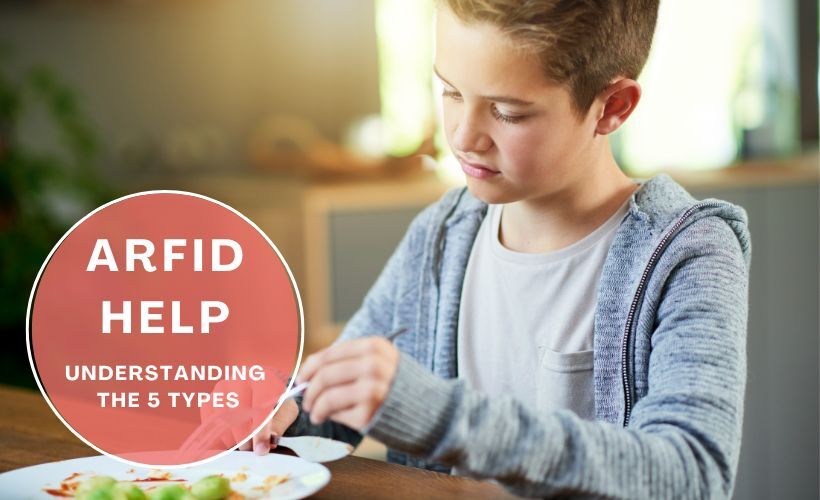
Avoidant/Restrictive Food Intake Disorder (ARFID) is more than “just picky eating.” It’s a serious eating difficulty that can affect nutrition, growth, and emotional wellbeing. Unlike fussy eating, ARFID isn’t always a phase — it can last into adolescence and adulthood.
At the same time, not everyone will receive an official ARFID diagnosis. Some people see themselves as “extreme fussy eaters” rather than identifying with the term ARFID. That’s fine — whether it’s diagnosed or not, help is available.
In my practice, I often see both children and adults whose attitude toward food has become deeply avoidant. The longer this lasts, the more they build a “fussy eater identity.” Over time, meals become less about nourishment and more about avoiding discomfort — doing anything to prevent the nervous system from being triggered.
Signs and Symptoms of ARFID
ARFID can show up differently from person to person, but some common signs include:
-
Eating a very limited range of foods
-
Feeling anxious, fearful, or panicked at the thought of trying new foods
-
Avoiding social situations that involve meals
-
Depending on supplements or formula for nutrition
-
Growth or health problems due to limited intake
👉 In my experience, whether it’s a child avoiding every challenge or an adult who has lived with food fear for decades, the pattern is the same: avoidance becomes a way of life.
Who Treats ARFID?
Because ARFID touches both body and mind, a team approach works best.
- Doctors and paediatricians – monitor growth and health.
- Dietitians – ensure nutrition is adequate even with a limited food range.
- Psychiatrists and psychologists – address anxiety, OCD, or trauma.
- Speech and occupational therapists – support swallowing, chewing, and sensory processing.
- Hypnotherapists – help with the subconscious fears and sensory triggers that keep ARFID in place.
From my perspective, ARFID often has a strong sensory element. Taste, texture, and even the appearance of food can trigger anxiety or fear. With hypnosis, once people feel safe enough to eat, they often find they can handle those sensory triggers far more easily.
The 5 Types of ARFID
Researchers describe ARFID in five different “profiles”:
-
Sensory-Based ARFID – food is avoided due to texture, smell, or appearance. I’ve worked with children who gag or refuse food purely because of texture.
-
Fear-Based ARFID – eating feels dangerous due to fears of choking, vomiting, or food poisoning. I’ve supported children with intense swallowing fears, and even adults who panic at the thought of choking.
-
Low-Interest ARFID – little appetite or pleasure in eating.
-
Post-Trauma ARFID – triggered by a specific event such as choking, illness, or surgery. One of my clients was an adult who, after successful GI surgery, couldn’t eat because of uncontrollable dry-retching and vomiting. With hypnotherapy, she began eating more variety and even reduced her vomiting episodes after the very first session.
-
Mixed ARFID – most people experience a blend of the above.
How Hypnotherapy Helps With ARFID
Hypnotherapy doesn’t force anyone to eat. Instead, it calms the nervous system and reshapes subconscious associations with food. Over time, this helps:
- Reduce anxiety and phobias
- Make sensory experiences less overwhelming
- Create positive associations with eating
- Support small but steady progress
One of my most moving cases was a 9-year-old who, after hypnosis, was finally able to sit and join family dinners — even in restaurants. Just weeks earlier, this would have been impossible. For that child and their parents, it wasn’t only about eating, it was about reclaiming family life.
Research on Hypnotherapy for ARFID and Eating Challenges
Research shows hypnosis can be effective for:
- Phobias such as choking or vomiting
- Sensory perception and processing
- Anxiety reduction
- Building confidence in gradual food exposure
While ARFID-specific studies are still developing, there’s already a strong evidence base in related fields.
Getting Started: Practical ARFID Help
If you or your child is struggling with ARFID or “extreme fussy eating,” here are some first steps:
-
Focus on safe foods and expand slowly
-
Build a supportive professional team
-
Celebrate small wins — even tolerating food on a plate is progress
-
Remember: recovery takes time, but change is possible
Final Thoughts: There Is Help for ARFID
ARFID can feel isolating, but you are not alone. Whether you see yourself (or your child) in the description of sensory struggles, fear of choking, or simply living with food avoidance for too long, there is help available.
With the right support — medical, nutritional, therapeutic, and subconscious — recovery is possible.
👉 For me, it always comes back to this: I love eating. And it breaks my heart when others can’t. That’s why I help children and adults find safety, confidence, and eventually even joy in food again.


